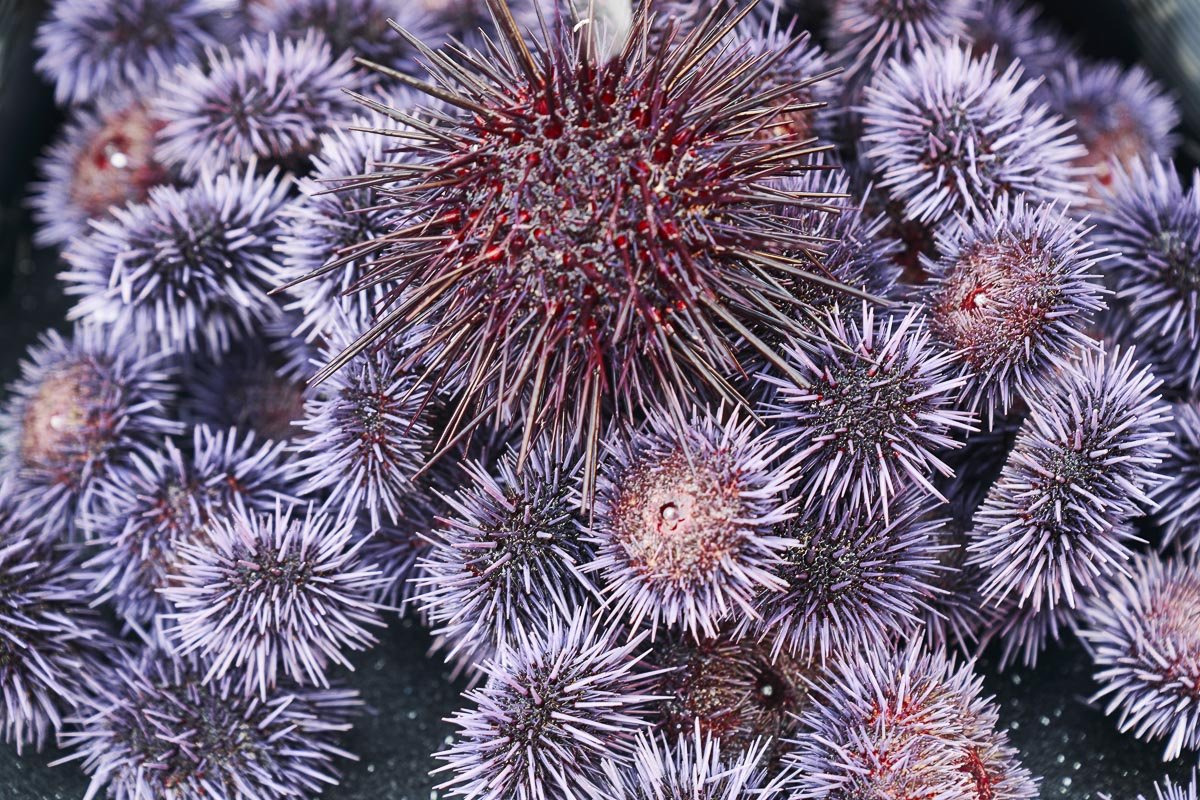
Regenerative
Aquaculture
What is aquaculture and
how can it be regenerative?
Aquaculture is simply the farming of aquatic species. There’s been a widespread fear of aquaculture being damaging to the environment due to the use of chemicals and antibiotics. In certain cases, this may be the case. But many types of aquaculture, like shellfish and seaweed, are actually beneficial to the environment, and will likely be what we depend on to feed a growing population.
What makes certain
species regenerative?
Oysters and clams are considered keystone species due to providing complex habitats to animals that live in the sediment and are also a key link for the exchange of nutrients from the water column to the sediment. By filtering nutrients from the water column they grow their own biomass and create more habitat. They are masters of filtration. An adult Pacific Oyster can filter about 50 gallons of seawater per day. This restores ecosystems by both cleaning excess nutrients and building habitat.
Seaweeds share a similar story. The intricate structures and immense heights of many seaweed species, provide a huge amount of habitat to our oceans. It is said that some kelp forests can house as much biodiversity as a healthy coral reef. This habitat is essential for both juvenile and adult species around the world. While growing these vertical structures, sometimes towering over 100ft in a matter of months, seaweeds demonstrate extremely efficient photosynthesis.
This process is extremely important for removing and storing carbon dioxide out of our oceans. Excess CO2 in our oceans is what is causing ocean acidification, which has detrimental effects to many species. Some scientists say that simply by growing seaweed in acidic regions we have the potential to lower these affects.
Restoring balance by
removing excess
nutrients and CO2
Sustainable Seafood:
West Coast practices
creating a hopeful future
While the mission of Winter Waters is around regenerative seafare - we also see potential in sustainable seafood and fishery practices. Here are some successes in Oregon’s fisheries.
Dungeness Crab - One of Oregon’s most sustainable fisheries, regulated by the 3 S’s: size, sex, season. Taking only males which have reached maturity and opening the season only when crabs are hard shelled and full of meat.
Purple Urchin - Due to a loss of their main predators (sunflower stars and sea otters), purple urchin populations have increased almost 10,000% on our coast. The Oregon Kelp Alliance has been removing purple urchins and raising them in tanks, “beefing them up” for the market.
Oregon Pink Shrimp - Another amazing example of fishermen and scientists working together on gear modifications that have practically eliminated bycatch. These tiny cold water pink shrimp are one of the specialties of our waters and something people can feel good about eating.
Groundfish Comeback - The groundfish (rockfish, lingcod, sablefish, etc) fishery along the west coast has had a major comeback in recent years. After plummeting due to the industry going too big, too fast, methods of fishing changed for the better. Gear was adapted to prevent bycatch and limit contact with the seafloor. This resulted in a remarkable rebound of groundfish populations which are now stable and sustainable.
Hook and Line Albacore Tuna - according to NOAA - U.S. wild-caught Pacific albacore tuna is a smart seafood choice because it is sustainably managed and responsibly harvested under U.S. regulations. On our west coast, these fish are harvested using hook and line methods that result in little or no bycatch. No nets are used in this dolphin-free fishery that targets younger, surface-feeding fish from abundant stocks.
Photos courtesy Nathan Holstedt and Blue Evolution




